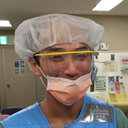A case of adult-onset type II citrullinemia induced by hospital diet.
کلید واژه ها
خلاصه
A 47-year-old Japanese man was first admitted to our hospital for 8 days because of an asthma attack. After discharge he changed his diet. On the 12th day after his discharge, he was re-admitted to our hospital because he exhibited transient loss of consciousness with flapping tremor. His plasma ammonia level was extremely high (245 μg/dL; normal, <90 μg/dL), suggesting hepatic encephalopathy. He underwent intravenous administration of branched-chain amino acids (Aminoleban(®)) and oral administration of lactulose and kanamycin sulfate; however, the hyperammonemia did not improve. Analysis of the amino acids and citrin gene led to the diagnosis of adult-onset type II citrullinemia (CTLN2). Following this diagnosis, the carbohydrate content of his diet was mildly restricted. As a result, his plasma ammonia level markedly improved (ammonia, 40-60 μg/dL) and he became symptom-free without any medication. CTLN2 is a metabolic disorder characterized by increased plasma concentrations of citrulline and ammonia, which occurs by the failure of compensatory mechanisms associated with diet. Here, we report a case of a patient for whom a change in eating habits during his hospitalization disturbed his compensatory mechanism resulting in clinical CTLN2, which was reversed with an appropriate diet.



